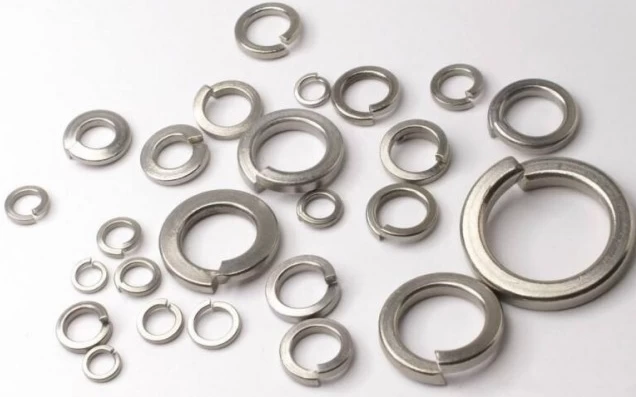Analysis of the principle and function of spring washers
Zoe Jia
2023-07-24 16:19:54
In all kinds of mechanical connections, the anti-loosening of bolts is a very important link, and there are many ways to prevent loosening of bolts in life, including the use of spring washers to prevent loosening. Spring washers are often called elastic pads in the screw industry. So why is it used so frequently?
First, the role of spring washer:
The basic function of the spring washer is to give the nut a force after the nut is tightened, increasing the friction between the nut and the bolt! That is, in order to prevent the vibration of the equipment in operation caused by the loosening of the fastening bolts, and a protective measure is added.
Second, the anti-loosening principle of spring washer:
The anti-loosening principle of the spring washer is that after flattening the spring washer, the spring washer will produce a continuous elastic force, so that the nut and the threaded connection pair of the bolt continue to maintain a friction force, generate a resistance torque, thereby preventing the nut from loosening. At the same time, the sharp corners at the opening of the spring washer are embedded in the surface of the bolt and the connected part, respectively, so as to prevent the bolt from rotating relative to the connected part.
However, it turns out that the spring washer can only provide a spring force of 10 N/m, which is negligible for a bolt preload moment of 280 N/m. Secondly, such a small force is not enough to embed the sharp corner at the cut of the spring washer into the surface of the bolt and the connected part. After unloading, it was observed that there were no obvious indentations on the surface of the bolt and the connected parts. Therefore, the anti-loosening effect of the spring washer on the bolt can be ignored.
First, the role of spring washer:
The basic function of the spring washer is to give the nut a force after the nut is tightened, increasing the friction between the nut and the bolt! That is, in order to prevent the vibration of the equipment in operation caused by the loosening of the fastening bolts, and a protective measure is added.
Second, the anti-loosening principle of spring washer:
The anti-loosening principle of the spring washer is that after flattening the spring washer, the spring washer will produce a continuous elastic force, so that the nut and the threaded connection pair of the bolt continue to maintain a friction force, generate a resistance torque, thereby preventing the nut from loosening. At the same time, the sharp corners at the opening of the spring washer are embedded in the surface of the bolt and the connected part, respectively, so as to prevent the bolt from rotating relative to the connected part.
However, it turns out that the spring washer can only provide a spring force of 10 N/m, which is negligible for a bolt preload moment of 280 N/m. Secondly, such a small force is not enough to embed the sharp corner at the cut of the spring washer into the surface of the bolt and the connected part. After unloading, it was observed that there were no obvious indentations on the surface of the bolt and the connected parts. Therefore, the anti-loosening effect of the spring washer on the bolt can be ignored.














